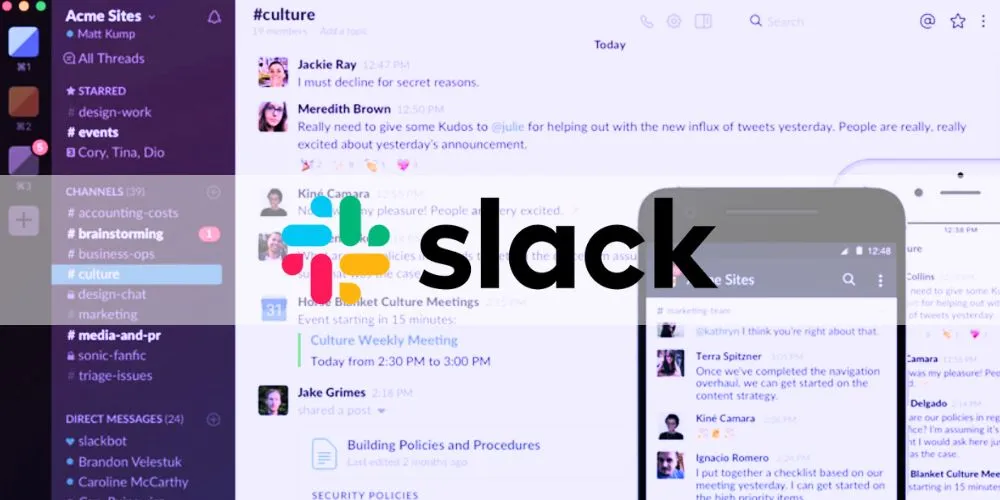Effective team collaboration is a cornerstone of organizational success in today’s hyper-connected and dynamic workplace. The need for seamless communication tools has never been greater, especially as remote work and distributed teams have become standard in many industries. Slack, a leading team collaboration platform, has emerged as a transformative tool that reshaped how teams communicate, manage tasks, and share information. This case study delves into Slack’s role in redefining team collaboration, examining its features, impact on workflows, real-world applications, and the broader implications for businesses across industries.
The Evolution of Team Collaboration
The way teams collaborate has evolved significantly over the past few decades, driven by technological advances and changing work cultures.
From Email to Real-Time Collaboration
In the early days of workplace communication, email was the primary tool for exchanging information. However, email’s linear and often cluttered nature created inefficiencies, particularly for teams needing real-time collaboration. Tools like instant messaging and video conferencing began to bridge this gap, but they usually lacked integration with other workplace tools, limiting their effectiveness.
The rise of platforms like Slack signaled a shift from static, siloed communication methods to dynamic, integrated systems. The platform transformed how teams interact by combining real-time messaging with productivity tools, fostering faster, more intuitive, and context-aware collaboration.
In a 2019 study, a marketing firm transitioned from traditional email-based communication to Slack and observed a 30% improvement in project completion time. The firm attributed this to reduced email clutter and the ability to manage discussions across dedicated channels.
The Rise of Remote Work
The COVID-19 pandemic accelerated the adoption of remote work, exposing the limitations of traditional communication tools. Organizations needed platforms that could replicate the spontaneity and efficiency of in-office interactions. With its focus on real-time collaboration and integration with third-party apps, Slack quickly became a critical tool for remote teams, ensuring productivity and connectivity.
Key Features of Slack
Slack’s success lies in its ability to address diverse communication and collaboration needs through an intuitive and feature-rich platform.
Channels for Organized Communication
One of Slack’s standout features is its use of channels—dedicated spaces for specific teams, projects, or topics. Unlike traditional email chains, which can quickly become overwhelming, channels allow users to access context-specific conversations, ensuring clarity and focus.
A software development company uses Slack channels to manage its Agile workflows. Separate channels for sprint planning, bug tracking, and client feedback enable team members to stay aligned and access relevant information without sifting through unrelated content.
Integration with Third-Party Tools
Slack’s ability to integrate with over 2,400 apps, including Google Workspace, Microsoft 365, and project management tools like Trello and Asana, sets it apart. This integration allows teams to centralize their workflows, eliminating switching between multiple platforms.
A financial services firm integrated Slack with Salesforce, enabling sales teams to receive real-time updates on client interactions directly within the platform. This streamlined communication between sales and support teams, leading to a 20% increase in customer satisfaction.
Search Functionality
The platform’s advanced search capabilities ensure users can quickly retrieve past conversations, files, and decisions. The platform also allows users to apply filters such as dates, channels, and file types, enhancing efficiency.
Customization and Automation
Slack enables teams to create custom workflows using its Workflow Builder, automating repetitive tasks such as sending reminders or onboarding new employees. This feature enhances productivity by reducing manual intervention.
Slack’s Impact on Team Collaboration
Slack has profoundly influenced how teams collaborate, offering tangible benefits beyond improved communication.
Enhancing Productivity
The platform minimizes time wasted on redundant tasks by centralizing communication and integrating workflows. Team members can access relevant information quickly, enabling them to focus on value-added activities.
A multinational advertising agency reported a 25% increase in productivity after adopting the platform. The agency used Slack bots to automate client brief updates, freeing creative teams to focus on campaign development.
Fostering Transparency
Slack’s channel-based communication promotes transparency by ensuring that information is accessible to everyone involved. This openness helps reduce silos, align goals, and improve decision-making.
Building Team Culture
The platform’s informal tone and features like emojis, GIFs, and custom reactions have made it a tool for building team culture. These elements allow for lighthearted interactions, fostering camaraderie even in remote setups.
A tech startup used Slack to host virtual coffee breaks and team trivia games during the pandemic, maintaining morale and team cohesion despite physical distancing.
Real-World Applications of Slack
Slack’s versatility makes it a valuable tool across diverse industries and organizational functions.
Startups and Small Businesses
It provides a cost-effective, scalable solution for startups to manage communication and collaboration. Its intuitive interface and integration capabilities allow small teams to operate efficiently, even with limited resources.
A health-tech startup used Slack to coordinate between its product development and clinical trial teams, reducing the time-to-market for its flagship app by 15%.
Large Enterprises
It is a unifying platform in large enterprises that bridges gaps across departments and geographies. By integrating with enterprise tools, the platform ensures that all employees, from the C-suite to frontline workers, stay connected.
With over 350,000 employees, IBM adopted Slack as its primary communication tool. The platform helped streamline global operations, enabling faster decision-making and improved collaboration across time zones.
Education and Non-Profits
The platform has also made inroads in education and non-profit sectors, enabling collaboration among educators, researchers, and volunteers.
A university used Slack to coordinate research projects involving multiple departments. Channels for specific grants and projects facilitated seamless communication, resulting in higher research output.
Challenges and Criticisms
While the platform has revolutionized team collaboration, it is not without challenges.
Information Overload
The constant stream of messages and notifications can lead to information overload, affecting employee focus and productivity. Organizations must implement guidelines to ensure Slack usage remains purposeful and balanced.
Security Concerns
As with any cloud-based platform, the platform faces potential security risks, especially when handling sensitive information. Companies must enforce strict access controls and monitor integrations to mitigate these risks.
A healthcare provider faced a minor data breach due to lax access controls on its Slack workspace. The incident highlighted the importance of using the platform’s enterprise-grade security features to safeguard sensitive data.
Dependence on Connectivity
Slack’s reliance on internet connectivity makes it less effective in areas with poor network infrastructure. Organizations operating in such regions may need alternative solutions to complement the platform.
The Future of Slack
As workplace dynamics continue evolving, Slack is well-positioned to remain a key player in collaboration.
Advancements in AI and Automation
Slack is incorporating artificial intelligence (AI) to enhance user experience. Features like predictive text, intelligent notifications, and AI-driven insights are expected to make the platform even more intuitive and efficient.
Hybrid Work Environments
With the rise of hybrid work models, the platform will likely focus on features that bridge the gap between in-office and remote teams. Innovations such as asynchronous video updates and virtual whiteboards could redefine team collaboration.
In 2023, a consulting firm used Slack’s video update feature to manage hybrid team meetings, ensuring remote employees felt equally engaged in discussions.
Competitive Landscape
As competition intensifies, Slack faces challenges from platforms like Microsoft Teams, which offer similar features bundled with Office 365. To maintain its edge, the platform must continue innovating and effectively addressing user needs.
Conclusion
Slack’s role in redefining team collaboration is a testament to the power of innovation and adaptability in addressing modern workplace challenges. By providing a versatile, integrated, and user-friendly platform, it has empowered teams to work smarter, faster, and more cohesively.
Despite challenges such as information overload and competition, Slack’s commitment to continuous improvement ensures its relevance in the evolving world of work. As organizations navigate the complexities of hybrid and remote work, The platform remains a cornerstone of effective team collaboration, profoundly shaping the future of work.










